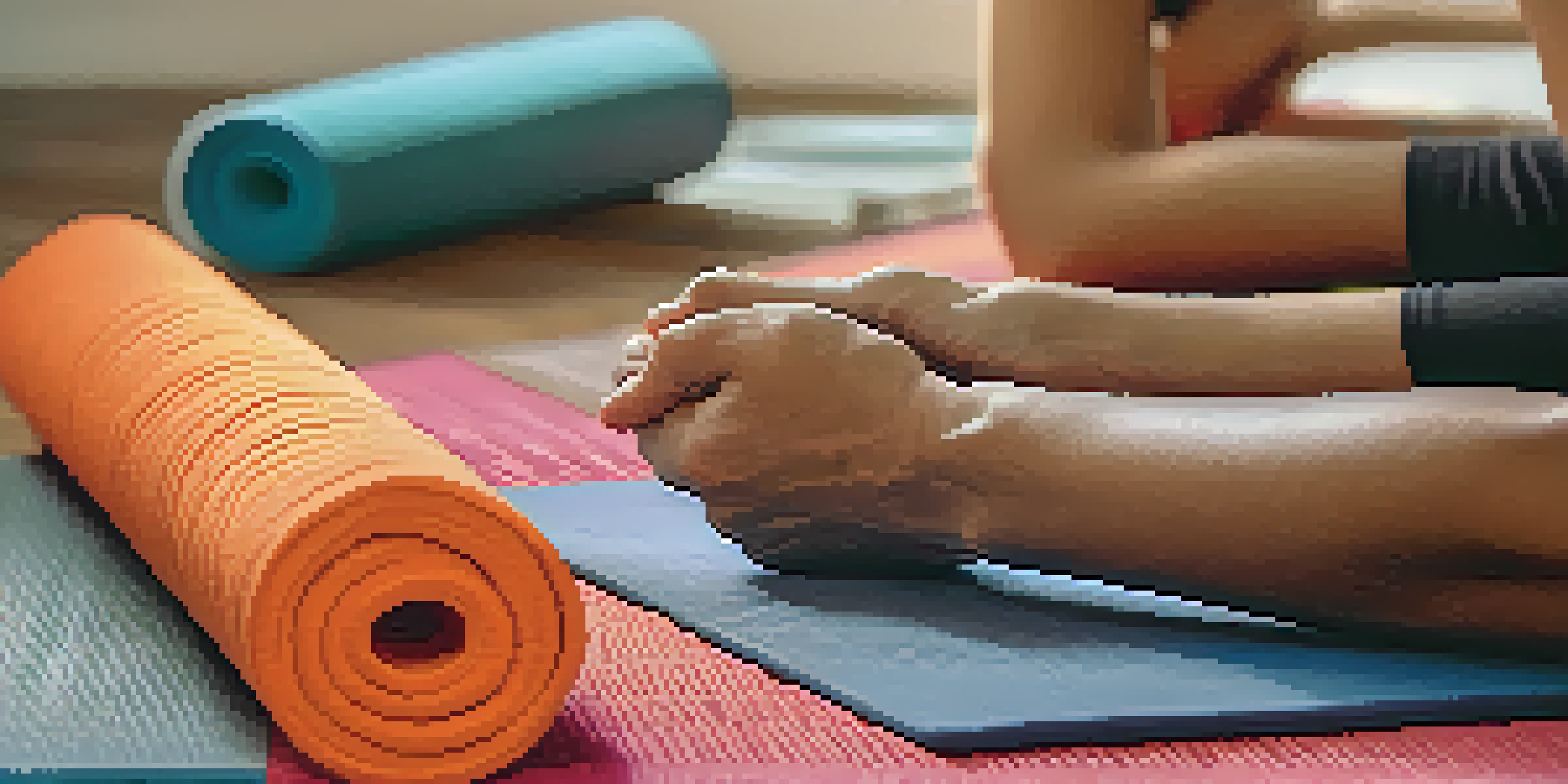Yoga for Beginners: Start Your Journey to Physical Wellness

Understanding Yoga: What Is It and Why Practice?
Yoga is more than just a series of poses; it's a holistic practice that brings together the body, mind, and spirit. Originating in ancient India, it has evolved into various styles, each offering unique benefits. Whether you're looking to improve flexibility, reduce stress, or enhance overall wellness, yoga can be a valuable addition to your lifestyle.
Yoga is the journey of the self, through the self, to the self.
The beauty of yoga lies in its accessibility. You don’t need any fancy equipment or prior experience to get started. Just a mat and a willingness to learn can open the door to a world of physical and mental benefits. Many people find that yoga not only strengthens their bodies but also fosters a sense of peace and mindfulness.
As you embark on your yoga journey, keep in mind that it’s a personal experience. Your practice can be tailored to fit your needs, whether you're a complete beginner or looking to deepen your existing skills. Embrace the journey, and remember that progress comes with patience and practice.
Essential Yoga Gear: What You Really Need to Get Started
When starting your yoga practice, having the right gear can make a significant difference. The most essential item is a good yoga mat, which provides cushioning and grip during poses. While there are many options available, look for one that feels comfortable and suits your style, whether that's a thicker mat for extra support or a lightweight one for portability.

In addition to a mat, consider wearing comfortable, breathable clothing that allows you to move freely. Avoid anything too loose that might get in the way during your practice. A good pair of yoga socks can also help, especially if you prefer a little extra grip on your mat.
Yoga: A Holistic Practice
Yoga integrates the body, mind, and spirit, offering a range of benefits like improved flexibility and reduced stress.
While props like blocks, straps, and bolsters can enhance your practice, they’re not mandatory for beginners. You can often use household items—like books or a belt—as substitutes. Focus on getting comfortable with the basics first, and you can always invest in additional gear as you progress.
Finding the Right Style of Yoga for You
Yoga comes in many styles, each with its own focus and approach. Some popular types include Hatha, Vinyasa, and Yin yoga. Hatha is often recommended for beginners due to its slower pace and emphasis on foundational postures, making it a great starting point.
Inhale the future, exhale the past.
Vinyasa, on the other hand, involves a more dynamic flow of poses and can be more physically demanding. If you're looking for a workout that combines movement with breath, this might be the style for you. Yin yoga is perfect for those who appreciate longer-held postures and a more meditative approach.
Take the time to explore different styles and find what resonates most with you. Many studios offer introductory classes or workshops, which can help you get a feel for each style. Remember, yoga is about personal connection and finding what feels right for your body and mind.
Basic Yoga Poses: Building Your Foundation
Starting with basic yoga poses is essential for building your foundation. Some key poses to learn include Mountain Pose (Tadasana), Downward-Facing Dog (Adho Mukha Svanasana), and Child's Pose (Balasana). These poses help develop strength, flexibility, and balance while being accessible for beginners.
As you practice these foundational poses, focus on your alignment and breath. Remember, yoga is as much about how you feel as it is about how you look. It’s perfectly okay to modify poses to suit your comfort level, and using props can help you achieve proper alignment.
Essential Gear for Beginners
A good yoga mat and comfortable clothing are key for starting your practice, while props can enhance your experience as you progress.
Incorporating these basic poses into your routine will not only enhance your physical practice but also prepare you for more advanced postures as you progress. Consistency is key, so aim to practice regularly, even if it's just for a few minutes each day.
The Importance of Breath: Pranayama Basics
Breath is a central component of yoga practice, often referred to as 'pranayama.' This Sanskrit term translates to 'life force control' and emphasizes the importance of breathing techniques in yoga. Learning to breathe properly can enhance your practice and help you connect more deeply with your body.
Start with simple breathing exercises, such as deep belly breathing or alternate nostril breathing. These techniques help calm the mind and promote relaxation, making them perfect for beginners. They can also be practiced anywhere, making it easy to incorporate mindfulness into your daily routine.
As you become comfortable with these techniques, you'll likely notice an increase in your overall sense of well-being. Breath awareness not only enriches your yoga practice but also carries over into everyday life, helping you manage stress and stay centered.
Creating a Consistent Practice: Tips for Beginners
Establishing a consistent yoga practice is essential for reaping its benefits. Start by setting realistic goals for yourself, whether that means practicing a few times a week or even just 10 minutes a day. Consistency can be more impactful than intensity, especially for beginners.
Designate a specific time and space for your practice. This could be a quiet corner of your home or a nearby park—wherever you feel most comfortable. Making yoga a part of your daily routine can help you cultivate a habit that promotes physical and mental wellness.
Finding Your Yoga Style
Exploring different yoga styles helps you discover what resonates with you, ensuring a more personal and enjoyable practice.
Lastly, be kind to yourself and allow for flexibility in your practice. Life can be busy, and it’s okay to miss a session or adjust your routine as needed. The important thing is to keep coming back to your mat and enjoy the journey of self-discovery.
Enhancing Your Practice: Resources and Community
As you continue your yoga journey, look for resources that can support your practice. Online classes, apps, and instructional videos can be great tools for learning new poses and techniques. Many platforms offer free resources, making it easy to explore different styles and instructors from the comfort of your home.
Additionally, consider joining a local yoga community or attending classes in person. Being part of a group can provide motivation and encouragement, and it’s a fantastic way to meet like-minded individuals. Many communities also host workshops and events that can deepen your understanding of yoga.

Don’t hesitate to ask questions and seek guidance from instructors or fellow practitioners. The yoga community is generally welcoming and supportive, and sharing your experiences can enrich your practice and help you grow.